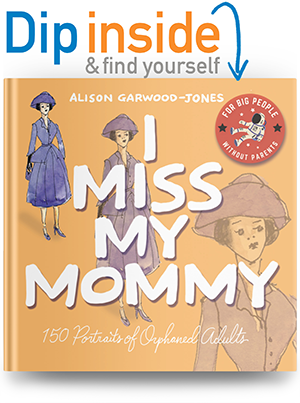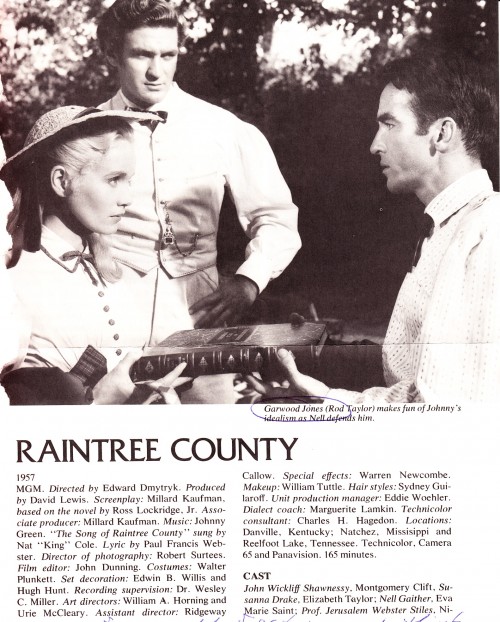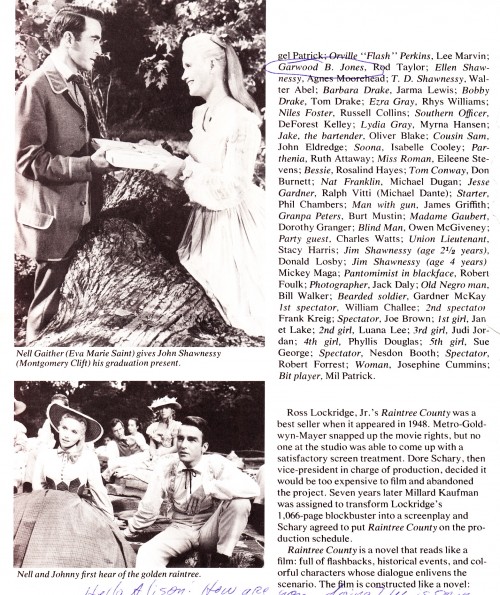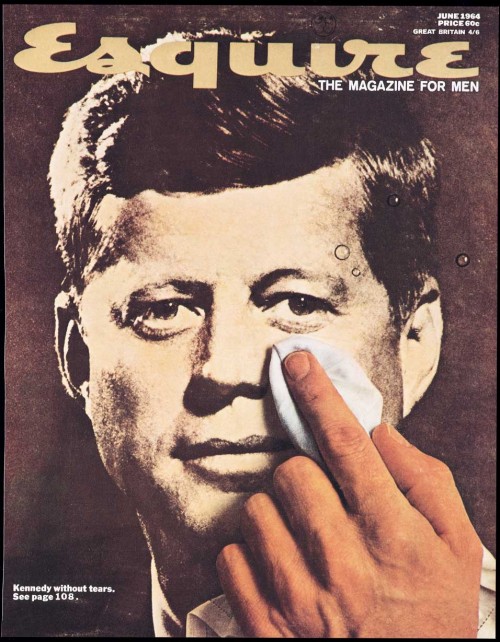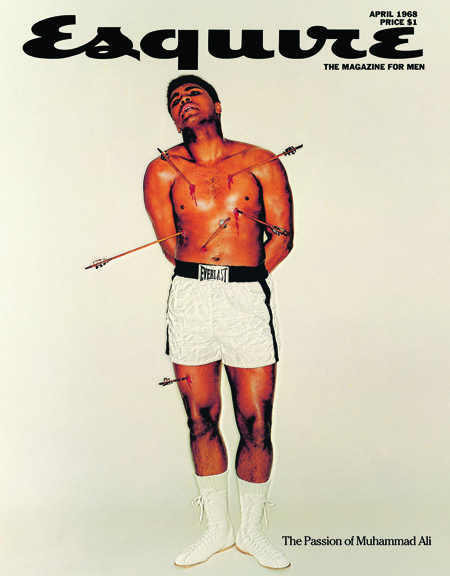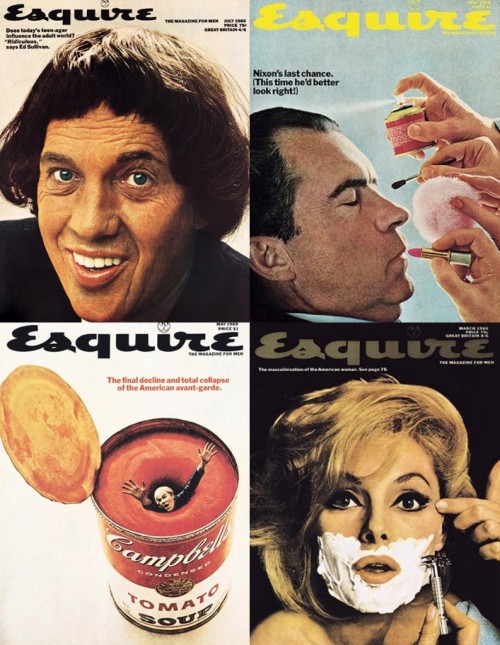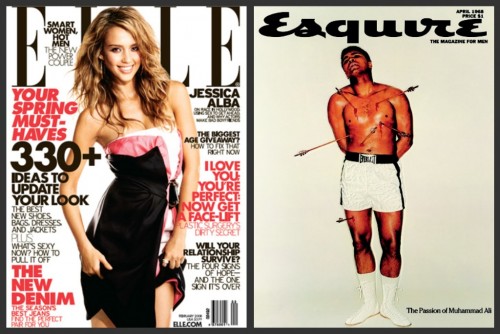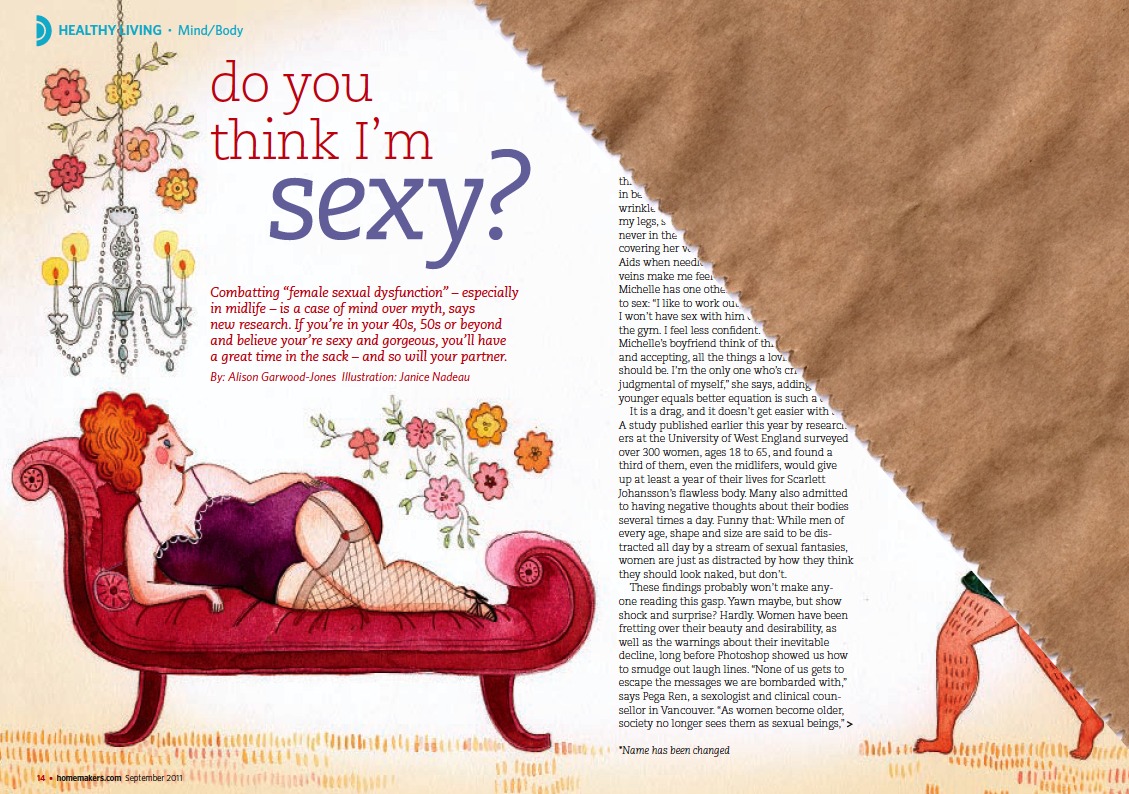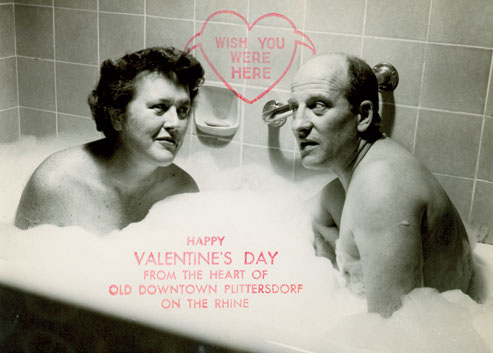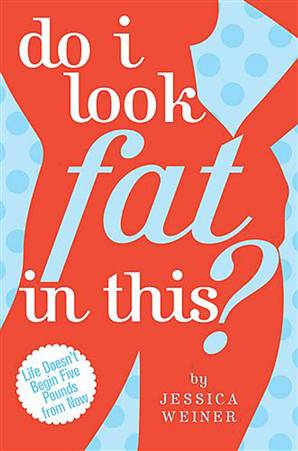Gold Star
September 21, 2010
Can AI Mark School Assignments?
May 15, 2023
The short answer is yes. I tried. First, it’s tempting to outsource marking given that most sessional instructors don’t get paid to grade assignments. Depending on class sizes, you can be marking for an entire week free of charge.
Will your students notice if they’re getting a gold star or a knitted brow from a robot? It depends on your teaching style. If you present as beige and technical in class, the AI’s feedback on their assignments will align with your general vibe. But suppose you like to regale students in class with personal anecdotes from the field and fresh news items and case studies that illustrate the learning objectives? In that case, you’ll have to figure out a way to punch up the AI’s assignment feedback so your students see you in the exchange — assuming that you care about being H:H (human to human). That niggly process of fixing paragraphs can be time-consuming.
 Procreate Illustration by Alison Garwood-Jones
Procreate Illustration by Alison Garwood-Jones
Next, to ensure the AI understands how to mark each assignment so it offers the most useful feedback, you need to craft a prompt that clearly denotes what is being evaluated. That may take several rewrites. Then you need to drop in the text from each student’s submission behind your prompt without missing any paragraphs during that grab and paste from the school’s learning management system.
Highlighting and grabbing text from uploaded PDFs, especially ones that include images, can be hit and miss. You may find yourself scrolling and scrolling to make sure all of the student’s assignment has been captured as you toggle between two browser windows (the assignment submission window and ChatGPT screen). That too is time-consuming.
Alternatively, you could download each assignment to see if that makes the cut-and-paste more seamless (tip: make sure you have enough disk space on your computer). But that’s adding friction, not subtracting. Either way, be prepared for eye strain and dizzy spells if you work on a laptop.
Oh … sometimes ChatGPT goes on sabbatical without notice and you have to wait for it to come back adding to the time you spend marking.
Conclusion: Reading student assignments and crafting the feedback myself turns out to be faster and easier and it feels more caring. Plus, I’m the kind of instructor who likes to give students my observations about their progress throughout the term. Just thinking about what it would take to feed the AI all of their course assignments so it could do the same high-level dot connecting sounds like a logistical headache and quite the opposite of AI’s promise of saving time through improved efficiency.
For now, using AI to grade assignments is not a slam dunk, but I’ll continue to monitor its potential and report back any changes.
She loves me
June 21, 2015
There’s a reason why guitar strummers always get the girl. Even base players have been taken aback over how easily the hugs and propositions flow after a show.
We’ve been saying it since the 1970s: some guys are just more “sensitive.”
Women notice men who can emote — or who, at least, convince us they can emote. These guys seem more clever than the rest. Less brutal. More courageous. Heroic, even, by female standards.
The majority of guys know this, but only a few scramble to deliver. And when they do, they make sure their hair blows behind them on stage like superhero capes.
Musicians are a special breed of men. More special than corporate lawyers, hedge funders or geeks. We used to believe in geeks until their skill set became worth so much that their fangs and knuckle hair grew. And it’s not that the musicians don’t have fangs. Theirs keep getting worn down by overthinking, free shots, rising rents and the knowing smiles of that girl in the the front row. It’s addictive.
The musician will rise each day at 2:00 pm and think about that elusive, perfect melody or lyric just to feel a fortune of gold hair run through his fingers again. And it doesn’t have to be gold. Copper is nice too.
When you’re a guy whose income gets delivered in a bucket, the contents of which you have to divide amongst the bandmates, that’s another file to the fang of your masculinity. Poverty keeps you in check — sort of. If you can’t win her with money, you’ll get her with words. Women subdivide along the same lines. There are those who crave trinkets and will stop at nothing to get them, and those who swoon to verse.
To achieve the swoon, the musician has to deliberately and consistently study a woman’s emotions, jot down her likes and dislikes, and ponder the meaning of it all. He can’t just stop at the visuals, like Roy Orbison did. Well, he can, but he knows he shouldn’t. The results will suffer. So he spends hours in a haze of botanical smoke turning over mots justes, coming up with new melodies, just so she’ll say Yes.
Sure, it’s self-interested. Completely self-interested. After all, the poetry is gone by morning, replaced by a surly silence and a shadow of new growth.
And, yet, the attempt to understand persists. It becomes a part of the man. That counts for a lot. An album’s worth of songs will force a guy to think about and occupy many different emotional realms and points of view: yours, theirs, and all the others.
To the men who can’t let themselves know a woman and who say that objectifying her is a way of avoiding being “annhilated”— I know, what a word! — pick up a guitar and work out your feelings and fears. (I realize my argument collapses with rappers, but I’m going to keep going).
If a guy can admit the following in writing, it’s a start, maybe even a first move to rethinking his survival strategies:
“I objectify women ’cause it’s safer. I receive an immediate gratification — a thrill if you will, albeit superficial. It keeps me safe, at least for a time, from annihilation, from a treacherous road of intimacy and vulnerability and the risk of being really seen and connected with. Or worse, rejected!! Yes, that’s it. It’s an avoidance of rejection. Intimacy takes a lot of work, courage and commitment. Objectifying is an ‘easy’ road out of the potential of rejections — at least for the moment. A slice of breathing room if you will, though illusory and ultimately unfulfilling and painful. It’s still or at least has been a strange sort of unconscious haven for me.”
A guy who identified himself as “R” wrote this admission on the Good Men Project website. Another guy named “RF” agreed with him and wrote:
“{I too objectify women} to avoid the terror of annihilation — being reabsorbed back into the feminine. {I do it to} avoid kicking up unhealed dependencies on my mother.”
Two guys does not a trend make, but …
Not too long ago on CBC Radio One, I heard an interview with a leader in the black community in Toronto who shared his observations about why so many fathers abandoned their families and lost touch with their children. I hope I’m getting this right, but he said something like, a black man who shows affection towards his children fears being labelled “homosexual” by other men in his circle. In other words, there is cultural pressure not to express genuine love and support towards your dependants, but to stuff your emotions and run as fast as you can in the other direction.
In a world that keeps reinventing racism and sexism and homophobia, we gotta rethink the ingredients it takes to build a man. I’ll write about women too, imperfect as we are, but in another post.
That brings me back to the musicians. When hockey is not an option, guys, pick up that guitar leaning against the wall. Pluck it and strum it and try to growl out a tune. Tell your story. Scribble down sentences and scratch them out. Try hard to tell the world about all the mistakes you’ve made, the relationships you’ve lost, the legacy of a father you’re trying to match, avoid, forgive or just move around. You’re still deciding. But just share.
And don’t just sing the results to us, to women. Sing to your brothers, other men who are running with no idea how to stop, connect and just be. Show them that men can and should emote. And teach them a chord or two so they can join you.
Language classes
May 30, 2014
At first we were told to study French.
And so we did,
Memorizing hundreds of verbs:
To resemble, to be like, to look like.
To loosen, to unleash, to let go.
To daze, to stun, to bewilder …
And when school was done with us, we found jobs in government.
Or moved to Montréal to become servers.
Most of us never bothered with it again, except …
Knowing even a little French was a source of smug satisfaction.
Especially in places like The Louvre Gift Shop:
“C’est un cadeau pour ma mère.”
Or the BNP line:
“Pardonez-moi, je suis venu ici en premier.”
Or on boulevards at insistent businessmen:
“Va te faire foutre, Ass Hole.”
That told them.
Some of us added German and Italian to the mix.
But then we were told, “Nope, now it’s Chinese.”
现在 我需要知道中国
Tutors held us hostage for hours learning this language.
Our Twizzler consumption tripled.
We started to wonder whatever happened to Esperanto?
All those plans to foster world peace and international understanding?
This was right at the time we were saving the Whooping Crane.
Naturally, that moment passed and was replaced by another,
With brand new rules.
The Whooping Crane survived.
And from the head of Zeus sprung Code,
The new global language.
Our stress over the past perfect seemed so silly now.
So neoclassical.
HTML tables drowned out verb charts, periodic tables,
Powdered wigs and harpsichord scales.
Border collapses, vertical alignments, global attributes.
Amo, Amas, Amat.
Be bold.
That’s easy today: <strong>Take that</strong>
Colourful. Are you kidding me: <span style=“color: #ff0000;“>I’ve got plenty</span>
Ignore said punctuation at your peril.
Practice it for 14 hours a day — at least.
And don’t expect to get the girl.
Wait! Invent an algorithm to see if she’s single.
Come up with the best combinatorics, graph theory and string analysis.
Watch out for the Russians and Chinese.
Don’t sleep.
Don’t change your underwear.
Just win.
Then collapse with some beer, pizza and porn.
But wait …
If your idea of language is something other.
If bold to you is Angelou and Mandela,
And search is Odysseus, not Google,
Be prepared to justify yourself to the Arbiters of Now.
Steel yourself for a life of economic poverty.
Or learn to speak their language in exchange for food,
And come home at sunset
To shelves stuffed with gold and folded roadmaps to Byzantium.
Embrace compromise, but bookend each day with riches.
</span><span style=”line-height: 1.5em;”>Not the end.</span>
Garwood B. Jones
December 27, 2013
Two weeks ago I opened my mailbox to a cream-coloured envelop the size of a Christmas card and thought it was the leading edge of a swell of holiday greetings sent with a stamp. It was from Chris & Wally, one of my favourite husband & husband duos. These two friends always reach out on statutory holidays and birthdays, and with homemade cards which delights me no end.
As it turns out, a Christmas card from the guys arrived several days after this envelope. This was different. Lifting the flap, I found out my family name had been a character in the novel Raintree County, which hit the big screen in 1957 as a Civil War romance starring Elizabeth Taylor and Montgomery Clift. Rod Taylor played Garwood B. Jones, a sleaze ball Indiana Senator. He’s the tall one standing in the centre in the pic above. For the record: he’s wearing a three-piece heather grey wool suit during a swamp scene (the “Garwood B. Jones Suit” recently sold for $900 on iCollector.com).
So much for going on about the singularity of my family name (you can read about its origins in my last post). This Hollywood reference has never popped up in any of my Google searches, probably because it was buried in the back pages — weighed down, as it were, by that middle initial, “B.” I’m chuffed to bits about it. And I take it Chris was too because rather than photocopying the reference, he ripped the thick page from its binding — you can see the ripped edge on the left margin in the photo at the very top — circled the “Garwood Jones” parts in ballpoint pen, folded it twice and dropped it in the mail.
I’m slightly pained and very touched that the guys would destroy a book for me, but more to the point that they would relinquish a handful of their Monty pics for me. Clift has to be one of the few more tortured than debonair Golden Age actors, other than James Dean, who still pursues gay men in their dreams. I fully understand what a sacrifice this was.
Skimming the novel, Garwood Jones (Taylor) revealed himself to be a greedy and manipulative man who took pleasure in mocking the idealism of Monty’s character, Johnny Shawnessy. That’s Johnny on the right (in the top pic). To the left is the angelic Eva Marie Saint who plays Nell Gaither, Johnny’s childhood sweetheart. Elizabeth Taylor plays the Southern hussy with the inky lashes who steals Shawnessy away right before she goes insane (for that, look down). It gets better: Nat King Cole sang the title song in the movie, a sweet number with harmonica solos reminiscent of “Moon River.” For all you film buffs, Raintree County was the most expensive film in MGM’s history (at that point). It was brought out to rival Gone With The Wind and shot using the new 65 millimeter widescreen process referred to as MGM Camera 65, the same effect used in that 1959 dust kicker, Ben Hur.

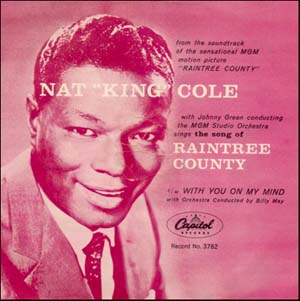
It’s interesting (to me, at least) to hear my name — one I associate with England and Wales and my fraternal grandmother’s determination to see her dead mother’s maiden name live on in history — pronounced with a Midwestern and Southern drawl. Hearing it in this context, I realize it’s tailor-made for a Southerners drawn-out pronunciation. Scarlett O’Hara would have turned my name into a syrupy dish: Ga-a-h-h —wood Jones. And as any genealogy buff will tell you, folks south of the Mason Dixon Line are famous for bestowing a mother’s surname as the Christian name for a first-born son — Beauregard, Harley and Leland are cases in point. I think that may have been the inspiration for the name Garwood in Ross Lockridge’s 1066-page novel Raintree County.
The Garwoods (my Garwoods) hailed from the town of Bury St. Edmunds in Suffolk, England. One of my forebears (an uncle to my fraternal grandmother) ran a vegetable stall in the town’s famed street markets. Every day he delivered a portion of his vegetables to the back door of the luxurious Angel Hotel. So it’s quite possible his carrots ended up on Charles Dickens’ plate. Mr. Dickens was a regular guest at The Angel in the late 1850s and early 1860s during the English leg of his reading tours. Meanwhile, back in America, the fictional Garwood B. Jones kept busy finding ways to escape combat in the Civil War. When Robert E. Lee finally surrendered in 1865, Garwood counted to ten, then ran for a seat in Congress against Shawnessy, Monty’s character. A one-time Republican, Garwood ran on the populist party ticket to increase his chances of winning, a move that drew the ire of Shawnessy. Monty’s natural brooding fed right into his indignation.
Here’s an excerpt of a conversation between the two men from Lockridge’s novel. I include it as a reminder of how human nature repeats itself in contemporary American and Canadian politics. And, most especially, in Toronto politics. Rob Ford has played the part of “The Great Commoner” with great success, giving the people what they want and protecting the interests of the many against the few. What makes an honest capitalist, or an honest politician? Garwood B. Jones thinks he knows:
“How do you do it, Garwood?” Mr. Shawnessy said. “How do you go on playing the part of the Great Commoner?”
“Up there on the rostrum,” the Senator said, “it’s the noble part of me that speaks. You fellows appeal to my baseness. To tell you the truth, I really appreciate Raintree County when I’m a thousand miles away from it. But if I had to live here for a month, I’d go nuts. It’s so–so goddamn wholesome and peaceful. By the way, what is your candid opinion of the program today? Did it go over?”
“You’re safe, the Perfessor said. “There’s one born every minute, and each one has a vote.”
“What made you think you needed to pull this big charade, Garwood?” Mr. Shawnessy said.
“I have to take cognizance of this new Populist movement,” the Senator said. “To be perfectly frank, I’m afraid of it. After winning every political contest I’ve been entered in for thirty years, I don’t intend to get stampeded out of office by this gang of amateur politicians and professional horse-thieves who call themselves the People’s Party.”
“Of which,” Mr. Shawnessy said, “I’m a member. The People’s Party is made up of the folks who are tired of a government of cynical understandings between politicians and businessmen. As for you, Garwood, you never belonged to the People’s Party-I mean the eternal and usually unorganized People’s Party. You always belonged to just one party, the Party of Yourself, the Party of Garwood B. Jones, and you never had but one platform-the advancement of Garwood B. Jones to the Highest Office Within the Gift of the American People.”
“Not so loud, John,” the Senator said, oozing laughter. “People will overhear you.” He leaned back in his chair, mellow and unperturbed.
“Yes,” he said, “I’ve always sought the advancement of Garwood B. Jones. He’s a magnificent guy, and I like him. But I’ve always furthered this wonderful bastard’s interests in strict observance of the American Way-by giving people what they wanted.”
“By appearing to give them what they wanted,” Mr. Shawnessy said. “The people want a chance to own their own land, to have economic security, to see government perform its function of protecting the interests of the many instead of the interests of the few. You’ll promise the same things that the People’s Party are promising, to keep your party and yourself in power, and once elected, you’ll go on doing what you’ve done before because it’s the easiest way and because it’s always been successful. You’ll continue to obey the voice of the Big Interests, while wooing the vote of the Little Interests.”
“My dear fellow,” the Senator said, using his big voice like a bludgeon, “you do me a great injustice. You speak of the so-called Big Interests as if they were gangs of criminals. Who built this vast country? The Big Interests–that’s who. These men are also feathering their own nests–but they’ve discovered that the best way to feather your own nest is to advance the interest of people generally. The honest capitalist like the honest politician is the servant of the people. He’s a man of superior imagination and daring whose ability to do his country good has earned him the just reward of continued power and wealth, by which he can continue to do good.”
Future shock
May 1, 2013
Shitty things can happen when good people do nothing. This is my interview with Story Board, the blog for the Canadian Media Guild and the Canadian Writers Group. The internet spreads stories, voices and awareness, when we use it well.
The 5-Minute Freelancer Q&A #8 – Alison Garwood-Jones
In this regular feature, Story Board asks Canadian writers to share a few details about their work habits and their strategies for navigating the ups and downs of freelance life.
1. What’s your strategy for generating story ideas?
A lot of it is just looking at the landscape and seeing what inspires me, what enrages me and seeing if I can respond to it in an engaging way. It comes from everything. I flit around from the computer to magazines, from print to digital, just trying to stay aware and trying to stay engaged myself and then seeing if I can spin it through my own sensibility on my blog. It’s everywhere. It’s based on what I see when I go to the AGO, it’s based on what I experience when I’m hanging out with friends at a restaurant, what are they talking about? What’s the latest app they’re using? My blog covers a wide range of topics, I put it under the umbrella of human nature, but I think what’s happening in the digital world is a good example of how human nature responds to new toys and new forms of communication.
And I’ve had several blog posts turn into pieces because editors have gotten in touch with me saying “that was really moving or really interesting, do you want to expand on that into a print piece?” I’ve always found that if something really gets me going, I’m probably not the only one.
2. What’s the most important thing you’ve done over the years to develop your writing skills?
Probably start blogging. I was reluctant in the beginning. I got into journalism late in my career. I had a whole other life as an art historian. And then I decided I wanted to be less of an academic and get into journalism and write for a broader audience. Write for the common reader, as Virginia Woolf said. I just wanted to engage on a more sort of visceral level with people through writing. The nice thing about getting into journalism in 2005 is that I was right on the tail end of the golden age of journalism. So adapting to a new environment in social media and web 2.0 wasn’t as hard for me. I wasn’t as invested in the old way. I hadn’t been in it long enough. A quote I put up above my desk was “I’d better flee into the future as fast as I can.” So the smartest thing I did was build a website, start blogging. I wouldn’t say getting on Facebook was necessarily a smart thing! But Facebook and all the social media platforms like Twitter and Pinterest are great for alerting people when you’ve got a new blog post and that’s how you drive traffic, obviously, back to your homepage.
I’m finding now that blogging… whereas before I was a little wary, like “what’s this all about, it’s devaluing the work of print journalists,” now I feel more like, wow, this is the biggest revolution for writers in I don’t know how long. And I’m really in agreement with Craig Silverman when he wrote last year on Facebook in a comment, he said “I see my blog emerging as the primary focus of my work, with the print column representing a unique extension and opportunity.” And when I read that I instinctively knew that’s exactly how I’m feeling as well. I honestly feel like my blog and my website is a sandbox for me. It’s where I workshop ideas and really work on my craft.
3. Do you think there’s ever a situation when it makes sense for a writer to write for free, and if so, when?
For me it makes sense on my blog, obviously. The fact that I haven’t entertained any advertisers is important. That’s deliberate. I want complete freedom. With my own work, I don’t have an attitude that every word I write is worth so much. Now outside of that it is a little more complicated. I definitely don’t think writers should undersell themselves. I think we’re at a watershed period where what’s happening right now with contracts – the all-rights grabs – is definitely an opportunity for writers to step back and say “no, this is unacceptable.” And it’s a scary step to take and a lot of people have shown an enormous amount of courage, Amber Nasrulla and Jay Teitel, and they speak for so many of us and they have my full moral support. This is a time where you almost have to live your life as a writer assuming that all publishers will go this route and will try and grab all moral and digital rights. So it means that we have to be really smart about looking for ways to pay our bills that don’t necessarily involve writing for magazines. Hopefully we can continue to do that and not all publishers will go with these kinds of contracts.
But I think you have to, as a businessperson, be really smart and say “okay because I refuse to sign that, let’s figure out how I can create a patchwork income doing a whole bunch of other different things so I can continue to write.” It may mean only continuing to write on your blog, who knows. But right now we’re going through such a transition period with so many interesting possibilities. Derek Finkle’s brought this up: self-publishing is becoming a really interesting and, as he said, a subversive tool for writers. A writer can take a larger cut of the royalties through self-publishing than they can through the traditional route. And that’s never happened before. There’s never been that much opportunity for writers to have control over their content and their royalties. So it’s a big transitional period, I find it really exciting.
Would I write service journalism for free? No, because I’ve already been on staff and you get to a point in your career where you know you have a certain skill level and it would be so regressive. Like the old saying goes “you can’t eat exposure.” At some point you don’t need more exposure. That’s not your goal. It’s about a business relationship and a respectful one on both sides. It’s tough. And I think it’s something they need to teach. They need to have these hard business-type discussions with students. It’s not all about crafting stories and narrative arcs. It needs to be, okay, you have to think about how long you’ll accept writing for free and at some point know that you can up the ante and start negotiating. And it needs to be earlier than I think what people have been doing. It’s amazing what you can get if you just ask for it. And not enough writers are doing that.
4. Work can take over your life when you’re a freelancer. What do you do to try and maintain a healthy work-life balance?
I walk a lot. I go out in the sunshine. I have a part time job at a bar downtown and that takes me outside of my head, helps me pay my bills and is a complete change of pace for me from the solitary life of writing. I think it’s important to mix up the kind of work and play that you do so that it’s not all surrounding writing or talking about writing. I just try and do things that are the polar opposite of what I might do at my desk. And that’s a good mental break.
• Alison Garwood-Jones is a Toronto-based writer and blogger. Her writing appears in the current issues of Glow, Azure, and House and Home and her blog, Society Pages was nominated for a 2013 Canadian Weblog Award. You can follow her on Twitter at @AlisonGJ.
In conversation with Erin Cooper Gay
May 22, 2012
“In Conversation” is a popular Q&A Segment on “Society Pages” that features interviews with creative risk takers. So far, I’ve profiled Bruce Mau, an industrial designer turned global thinker, Maureen Judge, a Genie Award-winning filmmaker whose real life docs focus on family dynamics, and Evan Jones, a pioneer in Alternate Reality Games. Evan’s computer feats have forever changed our relationship to our phones, TVs and computers and have won him not one, but two Emmy Awards.
 Bo Huang Photography
Bo Huang Photography
Last week I sat down with Erin Cooper Gay (pictured above). I met Erin a few months ago when we struck up a conversation at a Robbie Burns Day celebration. When I asked Erin what field she was in, she said, “I play the French horn with the Toronto Symphony Orchestra … but I’m switching careers.” After a pause, I thought she was about to say something like, “I plan to teach full time.” Instead, she leaned in just as they were about to pipe in the haggis and said, “I’m training to become a singer.” Career switches fascinate me, so I asked if I could call her.
Not many among us have the guts to follow a whisper in another direction, especially something as exacting and as public as, in Erin’s case, belting out love songs in foreign languages. She wants to specialize in Baroque music. Here’s what Erin told me about her move from the orchestra pit to centre stage.
AGJ: After we met, I went to your website and listened to snippets of your voice. [I invite my readers to do the same here]. When I heard you sing the libretto from Purcell’s Fairy Queen, I got a prickly neck. We’ve all heard about people who go half a lifetime not knowing they can sing or paint. Are you one of those?
ECG: [Laughs] No. My mom [Ann Cooper Gay] started the High Park Girls Choir in Toronto when I was seven and I was heavily involved in that until I was 16 — first as a singer, then a teaching assistant and finally as assistant conductor. And my dad [Errol Gay] was the librarian and a frequent guest conductor for the Toronto Symphony Orchestra. I grew up doing my homework in the stacks at Roy Thomson Hall and hung out a lot backstage. This was my world. I knew all the musicians from the time I was knee-high.
AGJ: With all that exposure, then, what did that little kid dream of becoming?
ECG: Ha! Good question. I always knew I would be a musician, but I didn’t know what form it would take. In the beginning, I was totally romanced by the idea of being in the orchestra. I wanted to be in the back of the pit cracking jokes with the boys because I was always a bit of a tomboy. The horn felt natural to me and I wanted to shine at it, but I’ve never had the same passion for it as I do for singing.
AGJ: So what held you back from pursuing singing first?
ECG: I didn’t see myself working to become an opera diva. Years ago, my mom was an opera singer with the Canadian Opera Company. She’s Texan and really charismatic, and I love that about her, but maybe early on I balanced things out by being more quiet and that’s why I chose the horn first. Like any kid, you want to forge your own path. With both my parents being musicians, I didn’t want to be known for doing exactly what they were doing.
AGJ: Was there a moment that changed all that?
ECG: Yeah. Five years ago, my dad wrote an opera called A Dickens of a Christmas for the Canadian Children’s Opera Company that premiered at the Enwave Theatre at the Harbourfront Centre. Dad and I were going through his first draft of the score and he asked if I could record all the parts for him. I did my best baritone, tenor and soprano voices just so he would have something on tape. Later, the singer who was playing Scrooge (a baritone named Mark Pedrotti) said to him ‘I think Erin’s really got a voice. Why doesn’t she come and study with me?’ I jumped at the chance because Mark is so wonderful [Pedrotti has performed as a soloist at at the Lincoln Centre in New York, The Kennedy Centre in Washington D.C., and the Mozarteum in Salzburg, among other venues]. At that point, I had just come back from Seattle after the breakup of my marriage, and I while I really wanted to play for the TSO [out West she had been playing with the Seattle and Vancouver Symphonies], I was starting to feel like I needed something else. I wanted to sing, but I didn’t know if it was going to go anywhere. Still, I felt like I had to take a chance. It was now or never!
AGJ: Is Mark your only teacher?
ECG: No, I have multiple teachers and mentors. When soprano Laura Claycomb came to Toronto to perform with the Canadian Opera Company as Gilda in Rigoletto, she took to my family. She’s a Texan. So am I. I was born in Alpine, Texas, but we moved to Toronto when I was three. I suppose you could say I’m fiercely Canadian, but with a Texan pride. Laura is from Dallas, which is where my mom is from. We all hit it off and Laura came to Easter Dinner at my parents’ place. By then, I had been studying with Mark for two years and he was saying that it was important for me to also start working with female singers. The timing was perfect. I met Laura, she offered to hear me sing, and what was supposed to be an hour meeting turned into four. We immediately discovered we work the same way, so we didn’t stop until things improved. At the end of the session, Laura invited me to her home in Italy. She’s been living in Europe for over ten years, just outside Turin with her husband “Tullio from Puglia!” [said with a lyrical Italian accent]. Laura was taking that whole summer off so I joined her in Turin, rented a room and we worked for three or four hours every day for 10 weeks.
AGJ: Are you working with anyone else?
ECG: After I met Laura, my world just opened up. I started singing for other veterans in the industry and they kept introducing me to more people I should know and programs I should take to hone my craft. In January, [soprano] Mary Morrison, [the guru of voice in Canada], took me on as one of her students. She’s 85 and made her radio debut on CBC Radio in 1944. Every single lesson with Mary has been gold. Her approach is very Scottish. She’s exacting and no-nonsense. Then not long after Mary I met Daniel Taylor, the countertenor. I went back stage after one of his performances with Tafelmusik. Later I sang for him and he said, ‘You need to come out to the Victoria Baroque Institute,’ and I was like, “Huh?” It’s so funny when Dan will say something in passing and it’s piece of music or a program that I don’t know about. He always says, ‘What do you mean you don’t know about X?! You need to know this NOW!’
AGJ: Didn’t you mention you’ve also been travelling to Quebec?
ECG: Yes. Last summer I met Bernard Labadie when he was guest conducting with the TSO. [Bernard is the founder and artistic director of two ensembles, the orchestra Les Violons du Roy and the choir La Chapelle de Québec, and has established himself worldwide as a leading conductor of the Baroque repertoire]. I was on second horn in the TSO when he was conducting, but I also worked with him briefly a few years ago when I coached the little kids who were playing the three spirits in the TSO’s production of The Magic Flute. Bernard is also very exacting and demanding and a fantastic conductor, particularly of 17th and 18th-century music. He remembered me and agreed to hear me sing. Afterwards, he said, ‘I think there’s something there. You need to work out some technical stuff, but I can help you with that.’ I took my dog Obi [a big, friendly chocolate lab] and we headed to Québec City last July to work with Bernard. He’s coached me several times since then. [In addition to playing French horn for the TSO, Erin is also playing for Labadie’s Les Violins du Roy and singing in his choir La Chapelle de Québec which performed the St. John Passion last Christmas at Carnegie Hall].
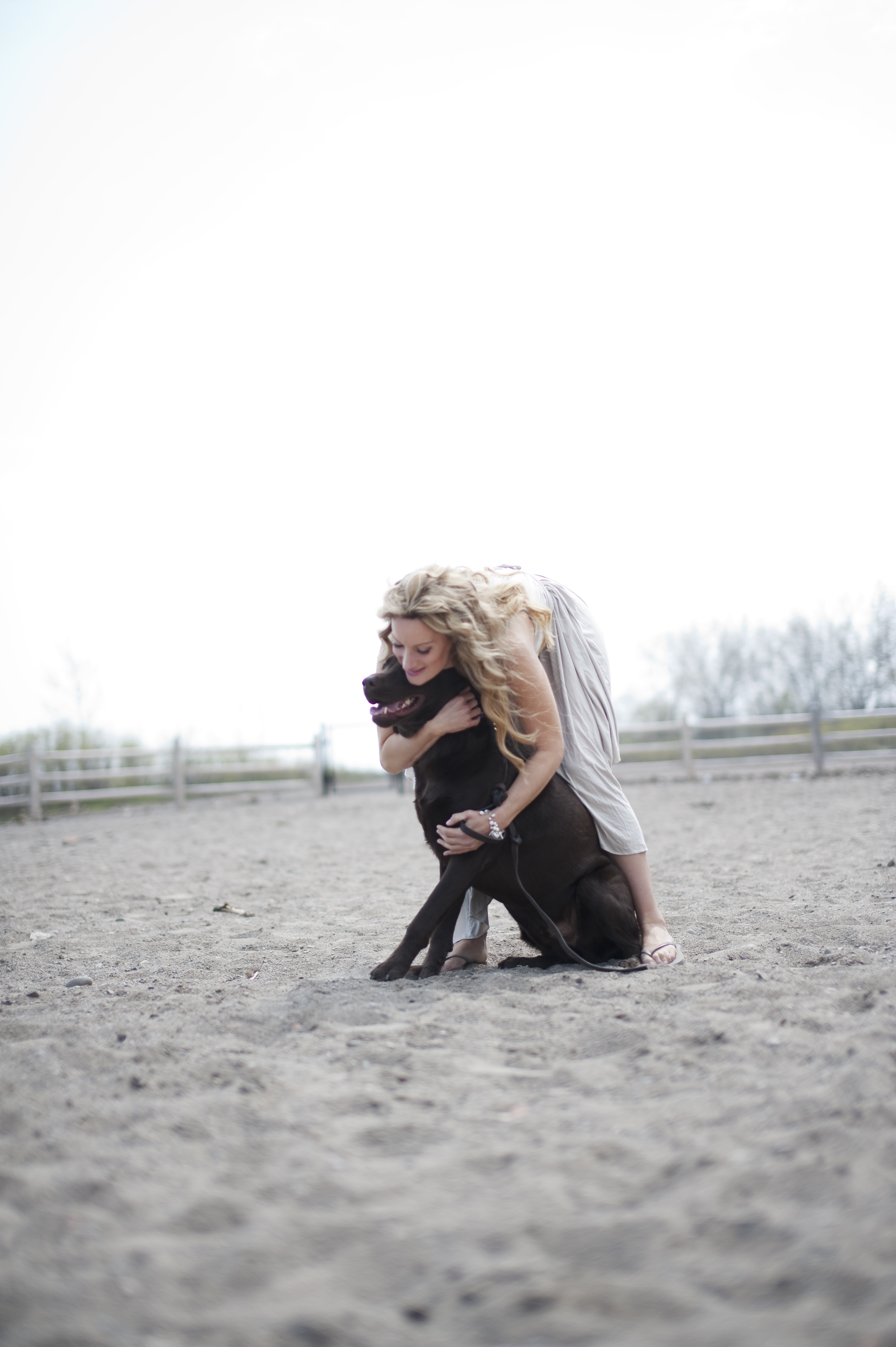 “Obi howls when I’m practicing my horn. But for whatever reason, he doesn’t howl when I’m singing. He likes to lie on my feet. Maybe he can feel the vibrations.” Bo Huang Photography
“Obi howls when I’m practicing my horn. But for whatever reason, he doesn’t howl when I’m singing. He likes to lie on my feet. Maybe he can feel the vibrations.” Bo Huang Photography
AGJ: Who’s your favourite singer?
ECG: Emma Kirkby, hands down. She’s the grande dame of early music singing and, in my mind, she’s IT. [Emma studied classics at Oxford then worked as a school teacher, singing in choirs for pleasure. When she started her voice wasn’t large, so she wasn’t a standout or an obvious star-in-the-making. But her fascination with early Renaissance and Baroque music, and all its associated instruments, was unique to the late 1960s and early seventies. Kirkby trained for decades, kept singing in ensembles and carved out a niche for herself, slowly rising to become Dame Commander of the Order of the British Empire in 2007. Kirkby’s awards are well deserved, but what Cooper Gay seems to be drawn to isn’t her volume, but the crystal clarity of her voice].
AGJ: Has Kirky’s voice affected yours?
ECG: Yeah, I gravitate to singers, like Kirkby, who don’t manipulate their voices a lot. I’ve always wanted a more natural-sounding singing voice, so I work hard on creating a more natural vibrato. For me, it’s not about adding more volume and vibrato, but freeing up my voice and spinning it. My teachers, like me, believe that there should be a connection between your speaking voice and your singing voice. I naturally speak quite quite low with some resonance, so for me to all of a sudden go, “Laaaaaaaaa!” [she screams a high F in my ear], is just plain jarring. I want to use a straight tone as an expressive tool.
AGJ: Hmm, I like that. I think I became a better writer the moment I stopped trying to be writerly and started making my writing voice match my speaking voice. That’s when I learned how to put a more natural tone and rhythm down on the page. I didn’t know that applied to singing as well.
ECG: You talk about singing naturally … well, I secretly always wanted to sing, not like this or that famous diva, but like a choirboy in the Vienna Boys Choir. Oddly enough, I didn’t understand why I couldn’t grow up and be a choirboy! I was upset that I couldn’t get the same tone — it’s pungent and so focused and, yet, has this unbelievable warmth and roundness to it that girls can’t come close to. I’ve always gravitated to that sound. I even think, at one point, I manipulated my voice to try and sound like a boy soprano. All the musicisans I admire say, ‘Go back to the text and sing it like you would speak it, like it’s the most natural thing in the world.’ When you do that it’s easier to connect with your audience.
AGJ: What’s a typical week like for you?
ECG: Well, it’s not just singing and orchestral performances. I also teach horn to several students. And I’m still a vocal coach. Almost every day of the week I’m getting ready for my next recital, so I’m memorizing, singing over and over or listening to recordings and repeating the text and speaking it as if I were an actor. On Tuesdays I sing in a master class at the University of Toronto after which I run down to Roy Thomson Hall for rehearsals with the TSO. Did I mention I’m also back in school?
AGJ: No. What are you taking?
ECG: When I met Daniel Taylor, he convinced me to join his one-year advanced certificate program in early music, so I’m studying for that too.
AGJ: Wow, your schedule is full. Do you need a nap? Can I take one for you?
ECG: It’s a very busy time! And because I’m a freelance soprano I also take care of lots of organizing and self-promoting for my recitals at ateliers and small venues. One thing I’ve realized is that with an orchestra, you sit in the back, play your part and go home. The music director and the marketing department handle everything else. But as a freelancer, you invest much more of yourself not just in performing, but in organizing and event planning. At least that’s how it is when you’re first starting out. It’s A LOT of work, but I like the feeling of ownership I have over everything.
AGJ: Do you live in a house where you can really let it rip, vocally-speaking?
ECG: I live in a condo. Luckily the guy next to me is also in the music biz, so he gets it. He’s into digital recording. We’ve worked out our schedules but, still, I’d like to move at some point because it’s a bit expensive where I am. Ideally, I’d love to house sit for someone to reduce my costs and sing and play as I want. As a musician, you never want to feel muffled in any way. You need to be able to go to extremes to find your sound.
AGJ: Are you keen to see more people in their 20s and 30s getting into opera?
ECG: Yes! I grew up in a musical family and had this really narrow path and narrow perspective, so I haven’t really met too many people outside that world. The coolest thing about having my dog is that Obi introduces me to people from all walks of life when we’re in the dog park. I’ve struck up so many friendships with people in other fields and it’s amazing to tell them what I do. Some go, ‘Oh, what’s that?’ Others have so much knowledge. — like this one woman I met who said, ‘I love Prokofiev’s piano music.’ And I was like, ‘Really?!’ Baroque and early music is hot right now with the general public, and it’s lot easier to sell to the younger crowds.
AGJ: As a freelance writer, I’m always interested in the logistics of how someone pays their bills without giving up on their dream. I write, I teach and pick up shifts at a neighbourhood pub to make ends meet. How do you make it work?
ECG: I have a patchwork income too. And I’m not even sure I consciously designed it that way. When an opportunity comes up I go for it. I’ve always made things work, but maybe not in the smartest way, financially-speaking. Like going to Italy to study with Laura. I’m in debt right now from that trip and still trying to work it out with a money coach. To get your dream off the ground, though, sometimes you have to sacrifice being financially responsible up to a certain point, then figure it out later.
AGJ: Where do you dream of performing?
ECG: Severence Hall in Cleveland.
AGJ: Really? I was expecting to hear La Fenice in Venice. Why Cleveland?
ECG: I went to school at the Cleveland Institute of Music. And I went there because of the Cleveland Orchestra. The caliber of musicians in that orchestra is second to none, as good as any in Vienna or Berlin. I can still pick them out in recordings. I had incredible teachers in Cleveland and had the opportunity to play with the Orchestra nearing the end of my time there [she was subbing for them]. It was a thrill to sit on the stage of Severance Hall, one of the most beautiful concert halls in the world. I dreamed in college of playing for the Cleveland Orchestra and I did, so performing there as a soprano would be like coming home.
Comeback Kid
February 23, 2012
When Delia Martins talks about her work as a hairdresser, her voice revs up like an engine. “Hairdressers are artists. We sculpt, we carve, we notch, my point cut, we slither and twist,” she says, dancing on the spot. “It’s all about flair and using your design sense.” Next, ask her about hair colour and her twitchy energy shifts into an even higher gear. “Oh yeahhh, the reds, the caramels, the golds. I love the before and after and being able to make heads turn.”
Listening to Martins describe her craft, you’d never guess she is blind. The 46-year old owner of Pro Hair Design, a salon in the Georgetown Marketplace Mall, 40 km northwest of Toronto, lost her sight after a double retinal detachment. It started with her left eye in 1993, followed by her right in 2004. Both times Martins was standing behind her chair working on a client.
lost her sight after a double retinal detachment. It started with her left eye in 1993, followed by her right in 2004. Both times Martins was standing behind her chair working on a client.
“It was just like a curtain falling down,” she tells me as I take a seat in her chair. She’s distracted momentarily. “Wow, your hair is very uneven, Alison. Are you cutting it yourself?” she asks, pulling at clumps on the either side of my head, like mismatched devil’s horns. “Yes,” I reply. “Well, don’t,” she counters, before getting back to her story. “Anyway, I had no idea what was happening to me the first time I lost my sight,” she says. “The second time, I was like, ‘Oh my god, it’s the retina!’ So I quickly finished my client’s hair, grabbed my car keys and told the girls, “I gotta go. Watch the store. I’m not sure when I’ll be back.'” Martins dashed out of the salon and drove herself home. “It was coming down slowly,” she says, recalling the loss of her sight in her one good eye. “You just have to drive with your head up a little.”
The retina is a light-sensitive membrane lining the inside of the eyeball. It’s as thin as Saran Wrap (or “cling film” for my British readers) and works like the film in an old-fashioned camera, receiving images produced by the lens. Every year, about 10,000 Canadians go blind when their retinas detach from the vitreous, a thick, jelly-like goo that fills the back of the eye. A blow to the eye can cause this, but so can diabetes. These are actually the two most common causes of retinal detachments. Severe myopia (near-sightedness) has also been known to liquefy the vitreous until the retina bubbles and lifts. Martins’ doctors think this is what happened to her both times.
Ophthalmologists often compare retinal detachments to a tear in wallpaper: what starts out as a pinprick-sized hole quickly turns into a blister that spreads until the entire sheet of paper is falling off the wall. Before this happens, response time is crucial. “If detachment starts at the outer edge of the eye, we like to catch it within six to ten hours,” says Dr. Alan Berger, ophthalmolgist-in-chief at St. Michael’s Hospital in Toronto. Berger operates on a couple of patients a week for detached retinas, most of them between the ages of 40 and 70.
In the crucial hours following Martins’ second retinal detachment in the summer of 2004 — the one that left her completely blind — a number of obstacles got in the way of her sight being saved. When she got home from work that day, she phoned her dad in a panic and asked him to drive her to the emergency walk-in clinic at nearby Peel Memorial Hospital in Brampton, Ontario. Martins opted not to call her fiancé, a contractor, since he was on a job site, or her oldest son, who also had his drivers license, because he was still in school.
By the time Delia Martins and and her father, Manuel, arrived at Peel Memorial, the walk-in clinic it was packed. They waited four and a half hours before a GP on duty could examine her. Shining a light on her cornea, the doctor informed Martins, a mother of two, “You’re just tired,” then asked, “Are you partying a lot?” He led her back to the waiting room and said. “Go home and get some sleep, and tomorrow you’ll wake up as good as new.” Martins was flabbergasted. Not only had this doctor just insulted her, but ignored what body wisdom told her was a second retinal detachment. Statistics show that the chances of a second retinal detachment increase by 15 percent when a person has already gone through the same thing in the other eye. Not knowing who else to turn to, Martins did as she was told and left the hospital on the arm of her dad.
The next day, Martins phoned her friend Debbie and they drove out to the Heart Lake Medical Centre in Brampton. Again, they faced a waiting room overrun with the sick and injured and their crying kids. Martins remembers pleading with the receptionist to get her in immediately. “I tried to explain that my retina had detached before and I thought it was happening in the other eye, but she just told me to take a seat and wait my turn.” The two women sat for about half an hour, but couldn’t stay any longer. “Debbie had food in the oven. We had to leave.” By then, Martins had well surpassed the six to ten hour time frame needed to save her eyesight.
Still flailing over her options, Martins remembers calling her dad again the following day and asking him to drive her to Acton, Ontario, to her optometrist, Dr. John Pond. “It took us three hours to get there,” she says. “Dad got lost on the way.” Pond examined Martins’ eye and immediately referred her to a specialist in Guelph.  A taxi was summoned and Martins’ and her dad were whisked off to the doctor in Guelph who examined her, called a second taxi and instructed that driver to take the pair to the Richard Ivey Eye Clinic in London, Ontario. Much later that afternoon, a surgeon in London attached a silicon band (called a scleral buckle) around Martins’ right eyeball in an attempt to push the wall of the eye back against the retina. But he soon realized it was too late to do any good. When the bandage was removed, all Martins could see was a shimmering halo of light.
A taxi was summoned and Martins’ and her dad were whisked off to the doctor in Guelph who examined her, called a second taxi and instructed that driver to take the pair to the Richard Ivey Eye Clinic in London, Ontario. Much later that afternoon, a surgeon in London attached a silicon band (called a scleral buckle) around Martins’ right eyeball in an attempt to push the wall of the eye back against the retina. But he soon realized it was too late to do any good. When the bandage was removed, all Martins could see was a shimmering halo of light.
Two months later, in October 2004, in a final attempt to restore her sight, Martins went back to the same doctor in London for a second procedure called a vitrectomy. The plan was, he would remove the scarred vitreous jelly from the centre of her eye — caused by the unsuccessful attachment of the eye buckle — and replace it with fresh saline solution. Martins bled so heavily during the procedure that the doctor mistakingly sewed the scarred vitreous to her pupil, causing her excruciating pain. “Even with Demerol, it got to the point where the pain was so bad I lapsed into a nervous state. My sons would find me hiding in closets. I was suicidal,” she told while we sat eating fries at a table in the food court just outside her salon.
 Martins’ family and friends quickly rallied, taking turns watching her around the clock. Her friend Marg Clegg, an office manager in Brampton and a longtime client, began making regular visits to her home. One in particular stands out. During a pause in a long and winding conversation about the randomness and unfairness of life, “Delia reached out and touched my head,” recalls Clegg. “‘Let me do your hair, Marg,’ she said.”Martins led her friend to the salon chair in her basement. “She felt her way through my trim,” recalls Clegg. “I watched what was happening with tears in my eyes.” Martin wet Clegg’s hair, divided it into sections, then went around her whole head pulling up strands through her comb. Each time, she brushed her palm against the ends to judge the length before running her scissors across in a series of clean snips. Clegg was Martins’ first client since losing her sight. “When Delia finished, I said to her, ‘I think you’ve done a better job now than you did when you could see!” They both cried.
Martins’ family and friends quickly rallied, taking turns watching her around the clock. Her friend Marg Clegg, an office manager in Brampton and a longtime client, began making regular visits to her home. One in particular stands out. During a pause in a long and winding conversation about the randomness and unfairness of life, “Delia reached out and touched my head,” recalls Clegg. “‘Let me do your hair, Marg,’ she said.”Martins led her friend to the salon chair in her basement. “She felt her way through my trim,” recalls Clegg. “I watched what was happening with tears in my eyes.” Martin wet Clegg’s hair, divided it into sections, then went around her whole head pulling up strands through her comb. Each time, she brushed her palm against the ends to judge the length before running her scissors across in a series of clean snips. Clegg was Martins’ first client since losing her sight. “When Delia finished, I said to her, ‘I think you’ve done a better job now than you did when you could see!” They both cried.
It was a seminal moment. Still, at the time, Martins didn’t have the strength to capitalize on it and go back to work. “Oh god, no. I was too depressed and too out of it,” she says. Martins was also ashamed of her appearance. A few months after the second London operation, her right eye began to atrophy and sink into her face. Martin’s eyes, once big and brown, had been her best feature. And even though she couldn’t see the changes, she could feel her face changing shape. It was devastating.”I’m in the beauty biz. I was puffy and bruised, and my face was deformed on one side. I looked like a monster.” She also had constant migraines” For the next 18 months, Martins stayed at home and tried to regain her strength. Her biggest struggle, emotionally, was coming to terms with the idea that the life she had been going for — and recently achieved — was gone forever.
Pro Hair Design was the culmination of a dream. The 800-square-foot store cost Martins $150,000 when she bought it back in 1999. “I didn’t rest until I got saved enough for the down payment,” she says. “I wanted to show people I could own my own business.” After graduating from beauty school in 1982, Martins worked as a junior stylist for several years, got married, had two sons, then opened a window business with her husband. When the marriage fell apart in 1995 — “He gave up on us. I have no idea where he is.” — Martins worked a series of jobs to make ends meet. She was a banquet server at a country club, a flight attendant on National Air followed by Air Canada as well as a collections officer, tracking down everything from unpaid mortgages to DNA samples. Through it all, she continued to do hair part-time, inviting clients over on weekends to sit in the chair in her basement. Clegg was one of those early clients. She and Martins have known each other for 17 years. “For Delia, the idea of losing her business this way, after struggling so long to make it happen, was just devastating to her,” says Clegg.
The turning point for Martins came late one afternoon almost two years after she went blind. “It sounds so stupid, but I was lying on the couch listening to an episode of Dr. Phil.” Ever since she stopped working at the salon and picking up after her kids at home, Martins started gaining weight and was now at risk of developing Type-2 diabetes, according to her GP. Still, her situation wasn’t half as bad as the woman sitting across from Dr. Phil. “This woman was 700-pounds and blamed her massive weight gain on a spider bite — a frickin’ spider bite!” says Martins, raising both hands. By the end of the program, Martins could barely breathe she was laughing so hard. “Screw that!” she announced to the empty house. “I’m going back to work.” The next morning, her fiancé drove her down to the salon.
At first, Martins had to feel her way around the store. “I was bumping into things and counting the number of steps back to my chair,” she says. She quickly determined that organization was key to her comeback. Everything — brushes and combs, scissors and clips, spray bottles and blow dryers — had to have a designated place. Next, Martins took some puffy felt letters from a kids alphabet set, a dollar store find, and stuck them on all of the product bottles. “SG” for the “spring gold” hair dye. “SB” for summer beige, and “BV” for a Katy Perry-esque shade of “blue violet.”
Being blind wasn’t the only challenge Martins faced. During her nearly two-year hiatus, she entrusted her business to a long-time friend and fellow stylist who proceeded to place double and triple orders of products under Martins’ name while he set up his own salon in Brampton. Sensing that things weren’t adding up, Martins arranged for an audit, prompting her entire staff to walk out on her shortly after she returned. Once again, what kept Martins going was the encouragement she got from her family — “my rock” — her regulars, like Clegg, and the pure joy she got from styling people’s hair. “I used to joke that I could cut and colour with my eyes closed,” says Martins, ignoring the spooky irony. Martins has since hired an enthusiastic team of young stylists she calls, “my eyes.”
Standing behind her chair, Martins is back where she belongs. When I sit down for a trim, she runs her fingertips lightly over my facial features. “You have a slightly heart-shaped face, high cheekbones and a long neck,” she says. “I think you should grow your hair out a bit on top, then go for feathered ends,” she adds, scrunching and tugging at my overgrown pixie cut. That’s the moment when she notices how uneven my cut is and that I’ve been cutting it myself (every stylist’s worst nightmare). She reaches into her top drawer and pulls out her scissors. “Just you wait, I’ll give you a custom-designed Alison haircut. You’ll look amazing.” And I believe her. As Martins works on my head, she chats about her life and asks me plenty of questions about mine. “What’s your job like?” “Do you ever get writer’s block?” And, “What do you mean you’re not married? With that face?”
Just as men meet at pubs, women go to beauty parlors to be waited on, to trade stories and go over the milestones and monotonous details of life. “I had so much to do this morning,” says Martins, tilting my chin to the side. “I was up at six doing laundry and cleaning the house. Then I made shepherd’s pie for dinner.” She says she prefers to do her chores in the morning. “It’s quieter, less chaotic.” Brushing the clippings of hair off my shoulders, Martins, without warning, breaks into Céline Dion’s, “I’m Your Lady.” You know the one: “Cause I’m your la-a-ady, and you are my ma-a-n.” I’m embarrassed, but she isn’t. She may be wildly out of tune, but the force of her energy fills the store. Dion, Andrea Bocelli and Sarah Brightman are her angels, she says.
Martins also regularly talks to The Man upstairs, the same one she railed against during her recovery. Scripture is like a lullaby to this ex-Catholic, onetime Jehovah’s Witness and current convert to evangelism and self-help. She listens to audio recordings of The Bible and “The Secret” on her phone. “One day I want to get my pastoral license and preach,” she says. “I want to apply what I know and encourage others to never give up.” Martins grabs a hand mirror and twirls me around in her chair to show off her work. “Check out the back,” she says, handing me the mirror. “It’s like I can see, don’t you think? I’m telling you, nothing is impossible. Just look at me … and you!”
“Kids today don’t know shit” — George Lois
October 18, 2011
Whenever anyone coos about the “Golden Age of Journalism” this is what they’re talking about:
And this:
And these:
Not this:
And and I worked for Elle, God love’em. But if you had to choose between
This and This
Which one stays with you? Haunts you? Plays on your imagination like a painting or a good book? It’s the Esquire covers by legendary art director, George Lois. Read about the time I met George here.
Maybe you’re thinking, yeah, but those subjects are too different: one shows Jessica Alba at the height of her acting and posing career while the other shows Muhammad Ali at the height of his fighting career, albeit banned from the boxing ring for refusing the call to military service (hence the martyr angle). If they feel too different, then try this:
Now you’re looking at Jessica Alba at the height of her posing career and some non-celebrity from the sixties tossed out of the game for being over 21.
The point being, you remember the cover that says the most with the least. “It’s like they’re trying to recreate the internet on the page,” George told me, pointing to all the verbal diarrhea on most covers (although I’m the one who chose the Elle cover). I called George at his Greenwich Village apartment last month and he was energetic, wildly profane and as opinionated as ever. “Every square inch of the page has information on it,” he continued. “That’s not the way to design a magazine. I’d take one-quarter of that information and do a graphic punch.”
I especially like magazine covers that tell us something fundamental about ourselves, like George’s commentary on ageism in America with the cover of the young woman in the trash can. He said he knew he would get flak for that idea and he did. Back then, anything grimmer than cheesecake was considered insulting to women. Forty years later, despite the march of time the Elle cover doesn’t question ageism it supports it with a chorus of blinking cover lines about “plastic surgery’s dirty little secrets,” the “biggest age giveaways,” using sex to get ahead, and the best new shoes, bags, dresses and jackets. It’s scattered and exhausting and what’s worse, alarmism in aspirational clothing.
George is coming to Toronto next month to talk at the RGD (Registered Graphic Designers) Conference. He told me he’s on a mission. “I’m coming to Toronto because I wanna drill into everybody what great ideas are all about.” At 81 he’s still crossing the continent trying to get us thinking about the elements that go into effective design and meaningful cultural commentary. And it all starts with one sharp idea at a time. Here are just a few of his.
 In 1965, before anyone had heard of Betty Friedan, Gloria (Glo Glo) Steinem, Germaine Greer or Women’s Lib, Lois reflected on the changes going on in women by doing a cover of a Marilyn Monroe lookalike shaving. “As a great designer, you should anticipate the culture. You should know what is coming. I knew the women’s movement was coming before women knew it. You knew it, you felt it in ‘em. All the women around me were getting stronger and tougher and weren’t taking any shit from anybody. The women were getting balls. I got it. I was working with women who did stuff, a TV producer who was incredible. She kicked ass. She wouldn’t take shit from me. She was delicious! So what do I do? I do a cover of a beautiful woman shaving. It knocks you on your ass. The wit’s there. The way she’s looking at you she’s saying, After I finish shaving, I’m gonna kick your ass. That communicates in a nanosecond. You get, you think about it and you remember it.”
In 1965, before anyone had heard of Betty Friedan, Gloria (Glo Glo) Steinem, Germaine Greer or Women’s Lib, Lois reflected on the changes going on in women by doing a cover of a Marilyn Monroe lookalike shaving. “As a great designer, you should anticipate the culture. You should know what is coming. I knew the women’s movement was coming before women knew it. You knew it, you felt it in ‘em. All the women around me were getting stronger and tougher and weren’t taking any shit from anybody. The women were getting balls. I got it. I was working with women who did stuff, a TV producer who was incredible. She kicked ass. She wouldn’t take shit from me. She was delicious! So what do I do? I do a cover of a beautiful woman shaving. It knocks you on your ass. The wit’s there. The way she’s looking at you she’s saying, After I finish shaving, I’m gonna kick your ass. That communicates in a nanosecond. You get, you think about it and you remember it.”
 Then there was the time George stood at the front door of CBS’s Studio-50 at Broadway and West 53rd and convinced that really big showman, Ed Sullivan, to come by his studio and pose in a Beatles wig. This was the week when America was just learning about the Fab Four. “When Sullivan finally came out I shoved a sketch of my proposed cover in his face and talked fast,” writes Lois on his website.” He took a long look and grinned ear to ear, just like the final shot we took the next day. He wore his wig with gusto and smiled like Ringo.”
Then there was the time George stood at the front door of CBS’s Studio-50 at Broadway and West 53rd and convinced that really big showman, Ed Sullivan, to come by his studio and pose in a Beatles wig. This was the week when America was just learning about the Fab Four. “When Sullivan finally came out I shoved a sketch of my proposed cover in his face and talked fast,” writes Lois on his website.” He took a long look and grinned ear to ear, just like the final shot we took the next day. He wore his wig with gusto and smiled like Ringo.”
 Five years ago editor Tina Brown (formerly of the New Yorker, Vanity Fair and now Newsweek) sidled to George at a party and said, “God George, your Esquire covers were genius but you can’t do those kind of covers any more.” “Why the hell not?” he asked. “Because ideas don’t sell anymore,” said Brown. “Waddya tawking about?” bellowed Lois in his fighting Bronx brogue. “C’mon, ideas are what make the world go round.” Brown went on about how newsstands are crowded with more titles, but Lois would have none of it. “You go to the newsstand now and there’s what, 150 covers? And my covers still leap out and grab you by the balls. It’s so obvious,” he said. Lois believes there are a ton of good graphic designers and ad men and women working today, but they’re working in a climate that rejects provocative commentary and the very notion of selling. When it comes to magazine covers the strongest show one idea, “like a beam of light,” Lois explains, pointing to his best covers of Muhammad Ali as Saint Sebastian and Andy Warhol drowning in his own can of soup. “Now, there’s a cacophony of cover lines and every square inch of the page has information on it, like a web page. Go for the graphic punch.”
Five years ago editor Tina Brown (formerly of the New Yorker, Vanity Fair and now Newsweek) sidled to George at a party and said, “God George, your Esquire covers were genius but you can’t do those kind of covers any more.” “Why the hell not?” he asked. “Because ideas don’t sell anymore,” said Brown. “Waddya tawking about?” bellowed Lois in his fighting Bronx brogue. “C’mon, ideas are what make the world go round.” Brown went on about how newsstands are crowded with more titles, but Lois would have none of it. “You go to the newsstand now and there’s what, 150 covers? And my covers still leap out and grab you by the balls. It’s so obvious,” he said. Lois believes there are a ton of good graphic designers and ad men and women working today, but they’re working in a climate that rejects provocative commentary and the very notion of selling. When it comes to magazine covers the strongest show one idea, “like a beam of light,” Lois explains, pointing to his best covers of Muhammad Ali as Saint Sebastian and Andy Warhol drowning in his own can of soup. “Now, there’s a cacophony of cover lines and every square inch of the page has information on it, like a web page. Go for the graphic punch.”
 Advertising also lacks conviction, says Lois, also legendary for his ad campaigns. Take car ads. “There’s no real winner or no real selling going on. Was that a Honda or a Mazda?” Lois believes the anti-sell is being taught in schools. “Don’t let them know you’re advertising. Don’t really mention the sale, just entertain. And I’m like, Are you kidding me? I entertain with wit, a sharp idea and a dramatic punch in the mouth. My commercials communicate in a nanosecond. You know I’m selling and you enjoy the hell out of being sold.”
Advertising also lacks conviction, says Lois, also legendary for his ad campaigns. Take car ads. “There’s no real winner or no real selling going on. Was that a Honda or a Mazda?” Lois believes the anti-sell is being taught in schools. “Don’t let them know you’re advertising. Don’t really mention the sale, just entertain. And I’m like, Are you kidding me? I entertain with wit, a sharp idea and a dramatic punch in the mouth. My commercials communicate in a nanosecond. You know I’m selling and you enjoy the hell out of being sold.”
 George uses computers, he likes computers, BUT … “I visit a lot of design schools and the students tell me about the projects they’re working on, but when I ask, ‘What ‘s the idea?’ they always say, ‘I dunno yet.’ ‘Then what are you doing at your computer?’ And they say, ‘Playing.’ ‘Well, then you’re playing with yourself; you’re just masturbating.’” It’s a problem when designers start designing before they have an idea, explains Lois. “You won’t get your ideas staring at a computer screen. You’ll get them by engaging with your surroundings, going to museums, studying art history, keeping up on the news.”
George uses computers, he likes computers, BUT … “I visit a lot of design schools and the students tell me about the projects they’re working on, but when I ask, ‘What ‘s the idea?’ they always say, ‘I dunno yet.’ ‘Then what are you doing at your computer?’ And they say, ‘Playing.’ ‘Well, then you’re playing with yourself; you’re just masturbating.’” It’s a problem when designers start designing before they have an idea, explains Lois. “You won’t get your ideas staring at a computer screen. You’ll get them by engaging with your surroundings, going to museums, studying art history, keeping up on the news.”
 “This whole thing with the Twittering and the networking and the narcissism that goes on. The time spent keeping up with your friends is beyond belief. Then on top of that, you can get all the information you want online and it’s pretty correct, except for Wikipedia, but when you talk to young people they don’t know anything. When they learn something, they forget it because they know it’s there. They don’t try and retain it. When you talk to them about the history of art and the history of culture, of movies made in the 1930s and 1940s, the ballet, about anything, they look at you and say, Well, I wasn’t alive then. Then I say, ‘Well, I notice you’re wearing a crucifix. Jesus Christ died a long time ago but you know about him …’ They’re supposed to understand culture. If you don’t understand the culture you can’t do great work. You could even bring up Muhammad Ali today and they don’t know what I’m talking about. I’ve been to the Met 5000 times. Every time I go I have an epiphany over something I didn’t quit notice before. It’s all the Shock of the Old. If you don’t know the history of art and design you’re unarmed. It’s a sad future when your young people don’t know shit.”
“This whole thing with the Twittering and the networking and the narcissism that goes on. The time spent keeping up with your friends is beyond belief. Then on top of that, you can get all the information you want online and it’s pretty correct, except for Wikipedia, but when you talk to young people they don’t know anything. When they learn something, they forget it because they know it’s there. They don’t try and retain it. When you talk to them about the history of art and the history of culture, of movies made in the 1930s and 1940s, the ballet, about anything, they look at you and say, Well, I wasn’t alive then. Then I say, ‘Well, I notice you’re wearing a crucifix. Jesus Christ died a long time ago but you know about him …’ They’re supposed to understand culture. If you don’t understand the culture you can’t do great work. You could even bring up Muhammad Ali today and they don’t know what I’m talking about. I’ve been to the Met 5000 times. Every time I go I have an epiphany over something I didn’t quit notice before. It’s all the Shock of the Old. If you don’t know the history of art and design you’re unarmed. It’s a sad future when your young people don’t know shit.”
 “I gave a talk a few years ago to magazine editors at a conference. They wanted me to do a talk on magazines covers and ripped their eyeballs out. They were looking at the covers I did 45 years ago and going WOW! About every 15 minutes I would berate everyone in the room. I would say to them, every magazine in this — and there were about 800 editors from hundreds of magazines — except maybe Vanity Fair and the New Yorker were complicit in the Iraq War. You all sat there and ate that bullshit up with a spoon. And anyone with half a brain knew that Bush was making things up and Cheney too. And I stunned them. Fifteen minutes later I said it in a different way and there was some applause. About half and hour later I said it again, standing ovation and they were saying, Yeah! We were complicit in the war. It was amazing. The point is: if you’re a designer you have to be a humanitarian. You have to speak truth to power. If there’s shit going on, you should figure out how in your job you can fight the bad guys”
“I gave a talk a few years ago to magazine editors at a conference. They wanted me to do a talk on magazines covers and ripped their eyeballs out. They were looking at the covers I did 45 years ago and going WOW! About every 15 minutes I would berate everyone in the room. I would say to them, every magazine in this — and there were about 800 editors from hundreds of magazines — except maybe Vanity Fair and the New Yorker were complicit in the Iraq War. You all sat there and ate that bullshit up with a spoon. And anyone with half a brain knew that Bush was making things up and Cheney too. And I stunned them. Fifteen minutes later I said it in a different way and there was some applause. About half and hour later I said it again, standing ovation and they were saying, Yeah! We were complicit in the war. It was amazing. The point is: if you’re a designer you have to be a humanitarian. You have to speak truth to power. If there’s shit going on, you should figure out how in your job you can fight the bad guys”
 “Magazines should not be designed for the reader. Great editors and great art directors should be designing a magazine for themselves. What kind of magazine would I love to read? What should be in it? What would it look like? You shouldn’t be saying, what does the public want? Let’s go out and do some research to find out what they want. What do they know what they want? I don’t believe in group gropes” All of this reminds me of Steve Jobs who, when asked how much market research he did when developing the iPad, responded, “None. It isn’t the consumers’ job to know what they want.”
“Magazines should not be designed for the reader. Great editors and great art directors should be designing a magazine for themselves. What kind of magazine would I love to read? What should be in it? What would it look like? You shouldn’t be saying, what does the public want? Let’s go out and do some research to find out what they want. What do they know what they want? I don’t believe in group gropes” All of this reminds me of Steve Jobs who, when asked how much market research he did when developing the iPad, responded, “None. It isn’t the consumers’ job to know what they want.”
 George inspired Matt Weiner to create the TV show Mad Men. But that doesn’t sit too well with him. “Right before the show premiered, everyone in town was saying to me, Hey there’s a show called Mad Men coming to TV and we think it’s about you! People called me up and said are you doing that show? I said, No. I don’t know what it is. They were promoting it as a show about advertising in the sixties. Instead, it’s a typical talentless, schlocky agency where the ad executives are schtupping their secretaries and smoking themselves to death. We didn’t’ spend the day sitting around. We were thinking, doing comps, running out to film shoots, going to commercials, doing my story boards all night. Who had time to get laid?”
George inspired Matt Weiner to create the TV show Mad Men. But that doesn’t sit too well with him. “Right before the show premiered, everyone in town was saying to me, Hey there’s a show called Mad Men coming to TV and we think it’s about you! People called me up and said are you doing that show? I said, No. I don’t know what it is. They were promoting it as a show about advertising in the sixties. Instead, it’s a typical talentless, schlocky agency where the ad executives are schtupping their secretaries and smoking themselves to death. We didn’t’ spend the day sitting around. We were thinking, doing comps, running out to film shoots, going to commercials, doing my story boards all night. Who had time to get laid?”
Hot off the press
August 21, 2011
Below is the “blogified” version of an article of mine that just hit the newstands. If you want to read the original piece (pictured above),
Go “clickety click” right here.
But first, I’d like to add a preamble … if you don’t mind.
The world is sick.
I mean, why do we insist on pushing people’s buttons and triggering self-loathing behavior with messages like this …
Hah hah, good one, we chuckle. Well, it’s not so funny when it worms its way down to this …
There are men and women who spread messages like this because thinking isn’t something they practice much.
Some do it for the same reasons others are racist. Human beings are essentially competitive and status-driven. Getting to the top can drive the vulnerable or mean-spirited among us to push themselves and others to do unhealthy things to the body and soul. Men and women are equally vulnerable to and affected by this.
For so many adult women, rebuilding a healthy core and a spirit of self-acceptance involves undoing a lifetime of the sort of programming and constant messaging that revolves around our bodies, looks and age.
Men are also criticized and joked about in popular culture, but mostly for their ideas and actions — like how drunk they got last night and other boneheaded antics. They’re lucky because guys are just as sensitive about their bodies as women are but, somehow, our human instincts (to protect their pride?) have spared them the microscope women have been pushed under. What’s that Margaret Atwood quote? Oh yeah: “Men are afraid of being laughed at. Women are afraid of being killed.”
Geez louise, it’s tiring deflecting all the bullshit thrown at women on T-shirts, on coffee mugs, in magazines and movies, and, more seriously, on political campaigns and in war. Will our bodies ever stop being the political football tossed around by Pro Lifers, religious militia groups and the fashion mafioso?
So to all the entrepreneurs out there (T-shirt moguls and magazine publishers included) who happen to be guys, your new girlfriends might not be ignoring you in the bedroom, but a lot of average Joes — who don’t think expensive jewelry is the answer to stoking the fires — are having a heck of a time getting close to the women they love, and have loved for years. That’s why you might want to rethink the slogans you’re mass producing, including this one:
There are times when you’ve got plenty to cry about because what you’re putting out there about women — on T-shirts or wherever — is affecting you directly. Going for a laugh and a buck, you ended up getting the cold shoulder from the very people you so desperately want to impress — women.
In the words of Aretha Franklin, Think.
Here’s my magazine piece from the September issue of Homemakers Magazine.
Do you think I’m sexy?
(’cause I sure don’t)
By society’s standards, Joanna Trainer, 34, is slim and drop-dead gorgeous. Her golden bob, graceful gestures and outwardly enthusiastic attitude capsize most of the men who meet her. You’d think her openly confident ways would naturally extend to the bedroom. Not true, she says. “For some women it’s wrinkles or jiggly thighs,” she says, “but I have bad veins in my legs,” and they’re getting worse as she ages. That’s why Joanna insists on having sex in dim lighting and she never gets spontaneous with her boyfriend during the day. She’s even gone as far as covering her veins with body makeup and band-aids when needles and lasers didn’t work. “My veins make me feel ashamed and repulsive.” So what does Joanna’s boyfriend think of her sensitivity about her legs? “He’s caring and accepting of me, all the things a loving partner should be. I’m the only one who’s overly critical and judgmental,” she says, adding wistfully, “This younger=better equation is such a drag.”
The pressure on women to look young is a drag and the wisdom that comes with age and experience doesn’t always tame this beast. The latest study of women and body image, published last March by researchers at the University of West England, surveyed over 300 women between the ages of 18 and 65 and found one third of them, even the mid-lifers, would give up a year of their life for Scarlett Johansson’s flawless body. This same group also admitted to having negative thoughts about their bodies several times a day, and said it was taking a toll on their relationships.  Funny that: while men of every age, shape and size are said to be distracted on the job by a stream of sexual fantasies, women are just as distracted by how they should look naked, but don’t.
Funny that: while men of every age, shape and size are said to be distracted on the job by a stream of sexual fantasies, women are just as distracted by how they should look naked, but don’t.
These findings probably won’t make anyone reading this gasp (yawn, maybe). Women have been fretting over their beauty, desirability and the warnings about their inevitable decline long before advertising art directors started smudging out their laugh lines in PhotoShop. “None of us gets to escape the messages we are bombarded with,” says Pega Ren, a sexologist and clinical counselor in Vancouver. “As women become older, society no longer sees them as sexual beings,” she says. Call it human nature, but there’s a cultural avoidance of a whole range of issues facing midlife women. “Unattractive, uninteresting and basically useless is the message society sends women after we hit 50,” says Julia Moulden, 55, a Toronto-based author and Huffington Post columnist. “It makes me crazy having to battle it all the time because I don’t feel it myself.” As a result, women in their forties, fifties and older have been excluded from the public discussion of what a sexual woman looks like and is doing in the bedroom. Ren thinks many women internalize this message. Assuming that they are no longer desirable, they shut the door on sex.
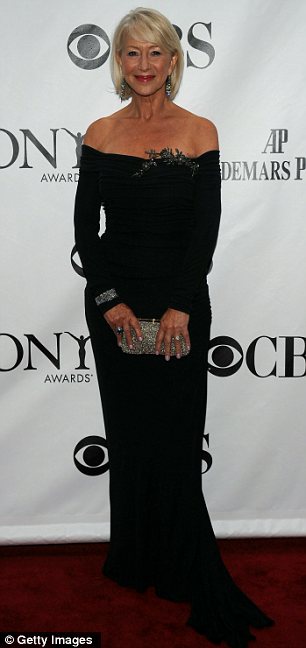 Have these women not heard of Helen Mirren? Positively radiant at 66.
Have these women not heard of Helen Mirren? Positively radiant at 66.
[pullquote]Women’s waning interest in sex as they age is more directly associated with how attractive they perceive themselves to be, not with declining hormone levels.[/pullquote]
That’s why when new research on female sexuality starts emerging that challenges and reverses old chestnuts about middle age “frigidity” and invisibility, women and men hold their breath with hope and caution. A consistent pattern in studies over the past two decades shows that women’s waning interest in sex as they age — and no one is disputing that — is more directly associated with how attractive they perceive themselves to be, and not with declining hormone levels. From this physical evidence, psychologists have developed a new approach to therapy that better understands the pressure put upon women’s psyches from a cultural context. It’s helping women better understand and address their body image concerns and strengthening their relationships both in and out of the bedroom.
Why am I not feeling “It”?
It’s not a physical fact that as a woman leaves her fertile years behind, her desire for sex will automatically drop off, then disappear for good. “We’ve seen too many exceptions to that,” says Lori Brotto, a Port Moody, B.C.-based psychologist whose research on the mind’s relationship to the body has gained international attention. When you follow women over their lifespan, she says, health challenges, depression, smoking, alcoholism and simply being in a long-term relationship can make desire go down. But what happens when a healthy woman pursues a new relationship at 65? “Her desire’s up again?” As Patricia Barthalow Koch and her team of researchers at Penn State found then published in the Journal of Sex Research in 2005, a mid-life woman’s quality of life and the quality of her relationship with her partner — i.e. how they communicate, their emotional intimacy and level of respect and true companionship with one another — are the best predictors of her sexual satisfaction.
[pullquote]If women’s bodies don’t give up on sex — and that’s an important new message, so spread it — why are so many women still putting up walls to romance?[/pullquote]
 The Samantha Joneses of the world, then, need not fret about life after their last period. “How you feel about yourself and your partner accounts for much more in the changes in desire than the bottoming out of estrogen that happens with menopause,” says Brotto. So if women’s bodies don’t give up on sex — and that’s an important new message, so spread it — why are so many women still putting up walls to romance?
The Samantha Joneses of the world, then, need not fret about life after their last period. “How you feel about yourself and your partner accounts for much more in the changes in desire than the bottoming out of estrogen that happens with menopause,” says Brotto. So if women’s bodies don’t give up on sex — and that’s an important new message, so spread it — why are so many women still putting up walls to romance?
Is there a pill for that?
A dozen years ago researchers at Vivus Inc., inventors of Alista (the precursor to Viagra), cheered like NASA engineers when they got the, ahem, “vertical indicators” they were hoping for from the men in their clinical trials. We met our goal, announced Vivus founder, Virgil Place, MD, we “put life back into dead penises.” A few years later, these same researchers slumped in their chairs when they got nothing from test groups of women taking the medication. Sure, the women experienced increased blood flow to their vaginas, but no orgasm. Even so, at last count 13 drug companies are still trying to find ways to make their pills work on women. But the medicalization of female desire by drug companies hasn’t been good for women’s spontaneity or confidence in the bedroom.
For example, the pharmaceutical companies were, successful in creating widespread acceptance of the labels “dysfunctional” and “diseased” for the sexually neutral and unresponsive women in their trials. Actually, the term they used was FDS for “Female Sexual Dysfunction,” and it came about because company researchers — many of them without MDs or PhDs — couldn’t, and still can’t, answer what’s clinically wrong with these gals who just don’t want to have sex.
[pullquote]The medicalization of female desire by drug companies hasn’t been good for women’s spontaneity or confidence in the bedroom.[/pullquote]
It was the drug companies (with products to sell) who also started bombarding the media with statistics about how many women were FDS. Oprah even ran with the numbers, back when her style was more “tabloid.” “It’s a secret epidemic,” she intoned in one show as the camera moved in close, “that 43% of American women experience some kind of sexual dysfunction.” “That 43% is still being bandied about,” says Brotto. Actually, it’s as high as 83%, weighs in Stuart Meloy, an anesthesiologist and pain specialist in Winston-Salem, North Carolina who got media attention when he introduced his “Orgasmatron,” a so-far unsuccessful gizmo that threads electrodes up a woman’s spinal cord to try and induce orgasm, only to set off some pretty wild leg twitches.
Studying women’s sexuality from the perspective of men is part of a long-standing tradition in medicine and psychiatry. “When you look at anatomy text books from a century ago,” says Brotto, “the section on women’s anatomy is just a few sentences long and it says, ‘We assume the same processes taking place in men hold for women.’” Brotto believes what the failure of the female Viagra (and we might add, all the follow-up gizmos) have really done for women’s research is “to put the spotlight on the need for more tailored and appropriate approaches into women’s sexual difficulties.” So while the boys are tinkering with our parts, trying to make them come alive, a contingent of mostly female clinicians, researchers, academics and scientists (and so many of them, Canadian) are studying the mind — things like our inner critic and the effects of ageism, sexism and politics on body image — to better understand women’s sexual expression across our lifetimes.
Mind over matter
Sex relaxes us. The research on how it heals us emotionally is endless. It’s also physically important. “Women who don’t have regular orgasms [with a partner or themselves] have more incontinence and more vaginal prolapses [when the vagina, uterus, rectum and small intestine fall, creating pelvic pressure and discomfort],” says Ren. As women age and society dismisses them, however, some gals have taken their invisibility as an opportunity to define themselves on their own terms, including sexually.
[pullquote]While the boys tinker with our parts, a contingent of female researchers are studying the mind, things like our inner critic and the effects of ageism, sexism and politics on body image on sexual expression.[/pullquote]
Moulden, author of We are the New Radicals and, her latest book, Ripe: Rich, Rewarding Work After 50, is one of them. She has noticed that where she used to go into a room and heads would turn, “that doesn’t happen anymore.” Even so, she has stopped referencing her younger self and giving in to society’s expectations. “I’m just experiencing this ‘new me’ that’s emerging since I turned 50, which has an inner strength that gets translated physically and sexually.” “New me,” she says, emerged partly from necessity (post divorce, “How am I going to survive?”) and partly out of desire. “I reconnected to a drive I hadn’t felt since my early 30s when I realized I was now in a position in terms of knowledge, skills and resources to do what I once only dreamed of.” Moulden worked hard, risked everything and discovered new capabilities and burnished strengths. “I’m so much stronger on every level and I like myself more than ever before.” It all “feeds this loop,” mentally and sexually.
Studies like those by Elizabeth Banister, a University of Victoria psychologist and RN, that focus on women’s midlife experiences of their changing bodies confirm that learning to accept the outward signs of aging is key to keeping sexual feelings alive. In other words, women who say to their partners, “Not now, I need to lose ten pounds,” generally show a more restricted range of sexual activities than those who accept, even like, their bodies.
[pullquote]Learning to accept the outward signs of aging is key to keeping sexual feelings alive.[/pullquote]
Pega Ren believes poor body image is one way women avoid engaging in their own sexuality. “I think many women are surprised when they let themselves have good sex. The thought of being a ‘Slut’ — still a perjorative term — can make some women hold back from allowing the enjoyment of sex to permeate their lives.” And again, research like the Penn State study and others confirm a direct correlation between women’s poor body image and “fewer satisfactory sexual responses as well as more problems with sexual desire, excitement and resolution.”
Silencing the inner critic
What doesn’t appear to be scientifically documented, but is certainly anecdotally confirmed, is that when it comes to sex, men are just glad when a woman shows up. At 43, David Angler∗ (not his real name) says he’s attracted to personality and connection. “I love and appreciate a woman who takes care of herself, “he says, citing soft skin as his particular weakness, “but it’s immaterial how large her breasts are or how big her butt is because if I’m with her, I’ve already accepted her for who she is.” In fact, ask most guys and they’ll tell you they don’t notice your veins or even a new haircut when you’ve made it clear you wants to be sexual with them. In their happiness — Gasp, you’re in something from Victoria’s Secret! — men skip over the details women care so much about. Now therapists are saying, let this work in your favour.
If men don’t notice the details, but women do, how do we silence the inner critic? This is Brotto’s specialty. She practices “Mindfulness Theory,” which isn’t about doing away with negative thoughts but, rather, noticing our tendency to have them and changing our connection with them. Through a series of exercises, she introduces women to the idea of watching themselves throughout the day, and even gets them thinking about thinking. “This way, when a judgment comes up, rather than saying, ‘Oh I look fat,’ and having a cascade of negative thoughts, what you do when that initial thought comes up is say, ‘Oh, well, that was a judgmental thought.’ You watch yourself think. You describe the kind of thought that you’re having and you do that without jumping into the thought itself.”
Brotto uses the metaphor of sitting on the bank of your stream of thoughts. “You watch your thoughts go by without taking a step into the water. If you maintain that distance between you and your thought, you can learn to recognize them as thoughts not a statement of reality.” The hope is that some of the suffering, rumination and negativity will start to fade. But how?
Dr. Brotto’s counseling methods on mindfulness are based on a Buddhist psychological model that claims suffering takes place when we over-identify with our thoughts. “When we have thoughts, particularly negative ones, we take them as the absolute truth,” she says. “Because we have these thoughts, we automatically assume they are true. In mindfulness, you treat thoughts as just ‘mental events,’ something the brain produces in the same way that the liver produces bile.” Brotto says once we see thoughts as just thoughts, the emotional pull of them goes down and we ruminate less. “It is not the thoughts themselves that are destructive, it’s our emotional reactions to them and the behaviors that ensue.”
Women may obsess about their bodies, but they have this fundamental disconnect between the mind and the body when it comes to sex, says Brotto. And it can’t be broached by simply adding Kegel exercises to your workout routine. “Socially and culturally, women tend to multi-task more than men do,” she says. “We take on multiple roles as mother, caretaker and wife, full-time worker, friend and sister and that means gliding through different aspects of life without really being fully in the present in any of them.” To encourage her clients to get accustomed to being fully in the present, Brotto has them to examine something as tiny as a raisin. “Eating meditations are long and drawn out,” she smiles. They’re all about embracing and being inside an experience — like how the raisin feels between your fingers, then on your tongue and what the burst of sweetness tastes like when you bite into it. Hmm, could that explain why Julia Child, who, at 6’2” towered over her husband, had so much good sex through her 40s, 50s and 60s? Really what mindfulness is all about is getting used to noticing details about otherwise meaningless things, and savouring the memories of them.
Ren says she often encourages the women she counsels for sexual difficulties to recall an amazing sexual experience they’ve had. “I ask them to remember what they were thinking or feeling during that encounter and what they were doing and, rarely, do I hear, ‘Well, I was holding in my stomach really well and my hair was doing this.’ No way! They remember how good they felt.” Ren reminds them of that and then asks them to remind themselves how they felt the next time their inner critic threatens to take over their thoughts.
Conquering negative body image is something women have to achieve on their own. While their partners can support and listen to them — David says that being extra attentive and satisfying his partner sexually helps her to forget about her flaws — but, in the end, it’s a personal decision that women need to make about what their priorities are, says Ren. Similarly, Brotto believes there’s a lot that women can be doing by themselves, which is why she gives her clients mindful exercises to practice at home that don’t involve their mates (those come much later). Brotto’s mindfulness group sessions with the raisin are also “female only,” in part, because the husbands of her clients are happy with the way their wives look and are eager to have sex with them.
The big question women need to ask themselves is, do you want to look good or feel good? “I don’t know if you can do both of those things simultaneously without making some decisions about what’s important to you?” says Ren. “All I know is that this is the only body we’ll ever have, it’s the one shot we’ve got at having as much fun and doing as much good as possible with that body, so saying, ‘I’m going to wait until I lose 10 pounds before I grow a garden, love my grandchild, have great sex, write that book …’” is just crazy.
As Diane Lane, 46, that great natural beauty, once put it, “If you want to live you have to age,” so start living and loving.








